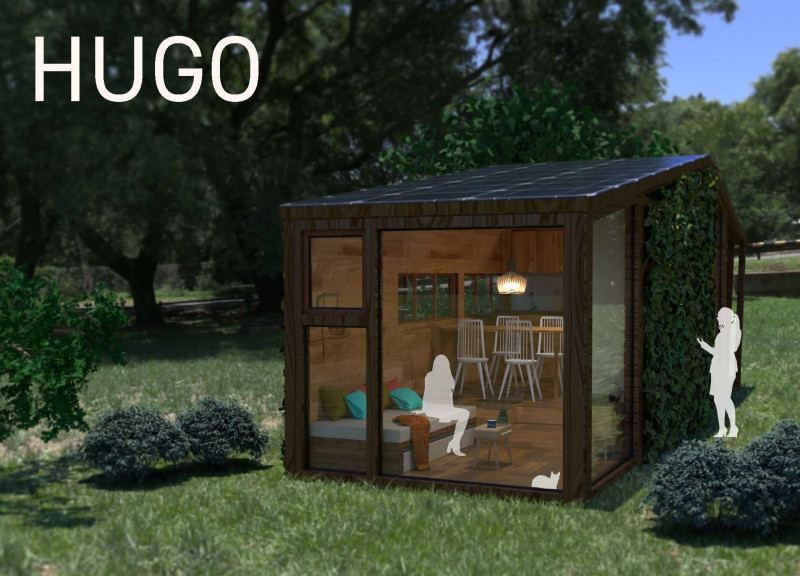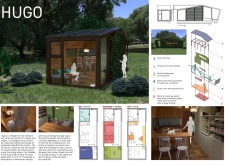5 key facts about this project
Hugo offers a quiet space away from the bustle of urban life, designed for couples and singles. Set in a flat area with European terrain, the home reflects a commitment to sustainable living. The design highlights simplicity while encouraging a connection to nature through well-thought-out features.
Sustainability and Self-Sufficiency
The house is fully off-grid, relying on solar energy and an effective water filtration system. This focus on self-sufficiency minimizes reliance on outside sources and supports a more eco-friendly lifestyle. Inside, furniture is designed with flexibility in mind. The sofa can change into a bed, and the dining table folds away, maximizing the available space in a compact layout.
Integration with Nature
A key feature is the vertical garden that allows residents to grow vegetables within the living space. This design choice fosters a stronger connection with the environment. The garden not only provides fresh produce but also adds a natural aesthetic that softens the overall look of the home.
Materials and Performance
Materials are carefully selected to enhance energy efficiency and comfort. Solar roof tiles capture renewable energy, and timber framing offers both support and warmth. The design includes vertical hydroponic walls, which assist with food cultivation and contribute to visual appeal. Large windows facing north and south bring in ample natural light and improve ventilation, making the indoor areas more inviting.
Architectural Detailing
The layout features an open floor plan with wooden flooring that provides a sense of unity throughout the home. Important systems, like the grey water treatment and solar energy storage, contribute to the off-grid functionality. Each element is purposefully integrated, creating a living space that balances modern conveniences with a tranquil lifestyle. The careful play of light and space enhances the overall experience within the home.



















































